Bun Cha is more than just a dish; it is a cultural emblem of Vietnam that has made its mark internationally, gaining unprecedented attention thanks to a historic meal shared by former U.S. President Barack Obama and celebrity chef Anthony Bourdain. This moment transformed a local delicacy into a globally recognized symbol of Vietnamese cuisine. It showcases the simplicity and complexities of Vietnam’s culinary tradition a story told through the smoky grilled pork, vibrantly fresh herbs, and a tantalizing dipping sauce.
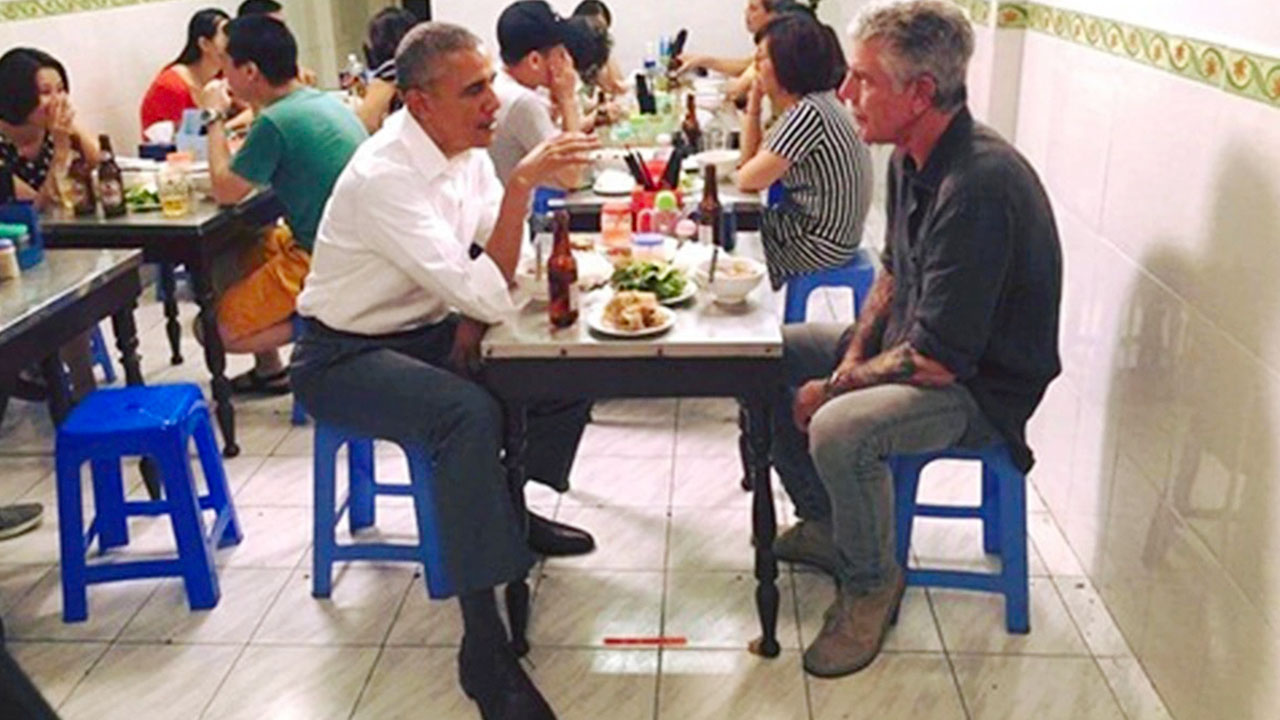
As we delve deeper into the origins, preparation, and impact of Bun Cha on both culinary landscapes and cultural exchanges, we discover not just a dish but a narrative of heritage, connection, and modern-day triumphs. This exploration highlights how a simple meal can resonate deeply within the hearts of many, bringing together people from different backgrounds through something as universal as food.
The Origin of Bun Cha
Bun Cha, a quintessential Vietnamese dish, originates from the bustling streets of Hanoi. Known primarily as a Northern Vietnamese food, it captures the essence of Hanoi’s culinary culture with its unique flavors and presentation. The dish features grilled pork (cha) served over rice vermicelli noodles (bun) and is often accompanied by a side of fresh herbs and a sweet, tangy dipping sauce.
Historical Background of Bun Cha
Historically, Bun Cha is linked to the vibrant street food in Hanoi, where this dish is believed to have emerged in the 20th century, specifically around the 1950s. The first notable mention of Bun Cha in culinary literature dates back to 1959 when food writer Vu Bang described the dish in his writings, highlighting its local charm and significance. The dish quickly became a staple in the Old Quarter of Hanoi, where vendors and restaurants began to specialize in preparing this unique blend of flavors.
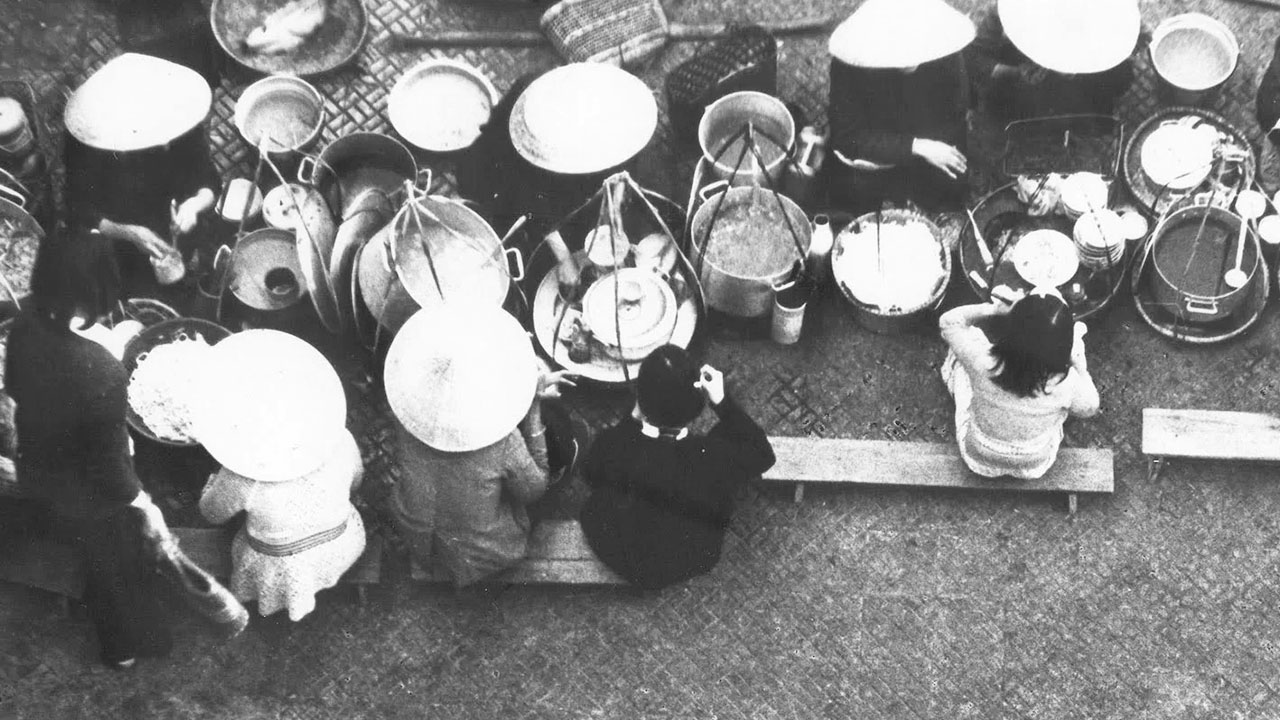
The traditional creation of Bun Cha is a reflection of Vietnam’s culinary philosophy, emphasizing fresh ingredients and harmonious tastes. It is frequently praised for its balance of flavors, ranging from the savory grilled pork to the crisp freshness of herbs. This authentic dish soon turned into a commonplace meal for Hanoi residents, embodying their food culture. Over the decades, it has transitioned from a simple, everyday meal into a dish that tourists and food enthusiasts seek out, especially with knowledge of its rich history.
Ingredients that Define Bun Cha
At the heart of Bun Cha lie essential ingredients that define its distinct flavor. Firstly, the grilled pork fatty, juicy pork patties, and thin slices of pork belly provides the soul of the dish. Marinated in a blend of fish sauce, garlic, shallots, sugar, and black pepper, this pork is grilled to perfection, achieving a mouthwatering char and rich, smoky flavor.
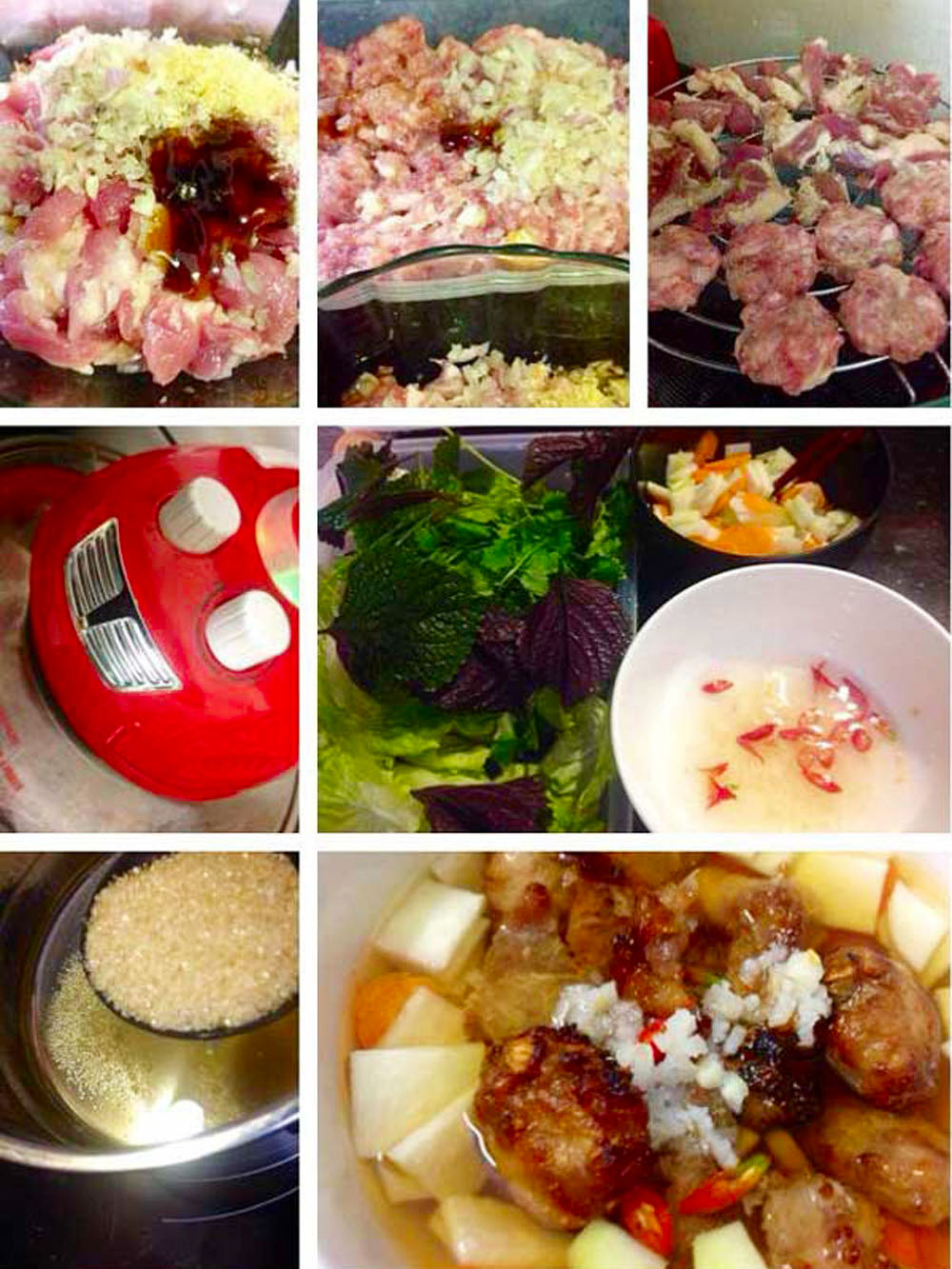
Secondly, the use of rice vermicelli noodles is indispensable. These noodles are dense yet light, making them the perfect counterpart to the flavorful pork.
In addition, fresh herbs, such as mint, cilantro, and Thai basil, are crucial for brightening up the dish, introducing aromatic freshness and complexity. A bowl of dipping sauce made from fish sauce, sugar, vinegar, and lime juice ties all the components together, providing layers of umami, sweetness, and acidity.
Moreover, complimentary pickled vegetables, such as carrots and green papaya, add a refreshing crunch, showcasing the dish’s attention to balancing flavors. This combination of ingredients not only creates a satisfying meal but also represents the culinary ethos of Vietnamese cuisine creating harmony through well-selected components.
Regional Variations of Bun Cha in Vietnam
Though Bun Cha is famed for its Hanoi roots, regional variations can be found across Vietnam. The unique interplay of local ingredients and cooking styles has led to adaptations that appeal to regional palates. For instance, in the southern regions of Vietnam, similar dishes may exist under different names and often feature different proteins or sauces.
In contrast to its Northern counterpart, Southern variations may include additions such as fried shallots or various dipping sauces that differ in sweetness and spiciness. These adaptations may also feature different greens or accompaniments, reflecting local growing seasons and flavors, contributing to the continuous evolution of Bun Cha within Vietnamese cuisine.
Even dishes like Bun Thit Nuong, which resembles Bun Cha but is based on grilled pork skewers instead of patties, showcase regional diversity. This illustrates how regional preferences can inform and shape traditional recipes, paving the way for a diverse Vietnamese culinary landscape.
The Obama Connection
The connection between Bun Cha and former President Barack Obama has indelibly marked this dish’s place within global cuisine. During his visit to Vietnam in May 2016, Obama dined at Bun Cha Huong Lien, alongside celebrity chef Anthony Bourdain, bringing the dish into the international spotlight.
The Story Behind Obama’s Bun Cha Experience
This encounter was not just a dining experience; it was a defining moment that captured the essence of cultural diplomacy. As Obama and Bourdain sat at a modest plastic table, sharing a simple meal of Bun Cha, the meal became symbolic of friendship and understanding between two cultures. Their candid discussions and laughter showcased the joy of sharing food, regardless of status, making a powerful statement about humanity and connection.
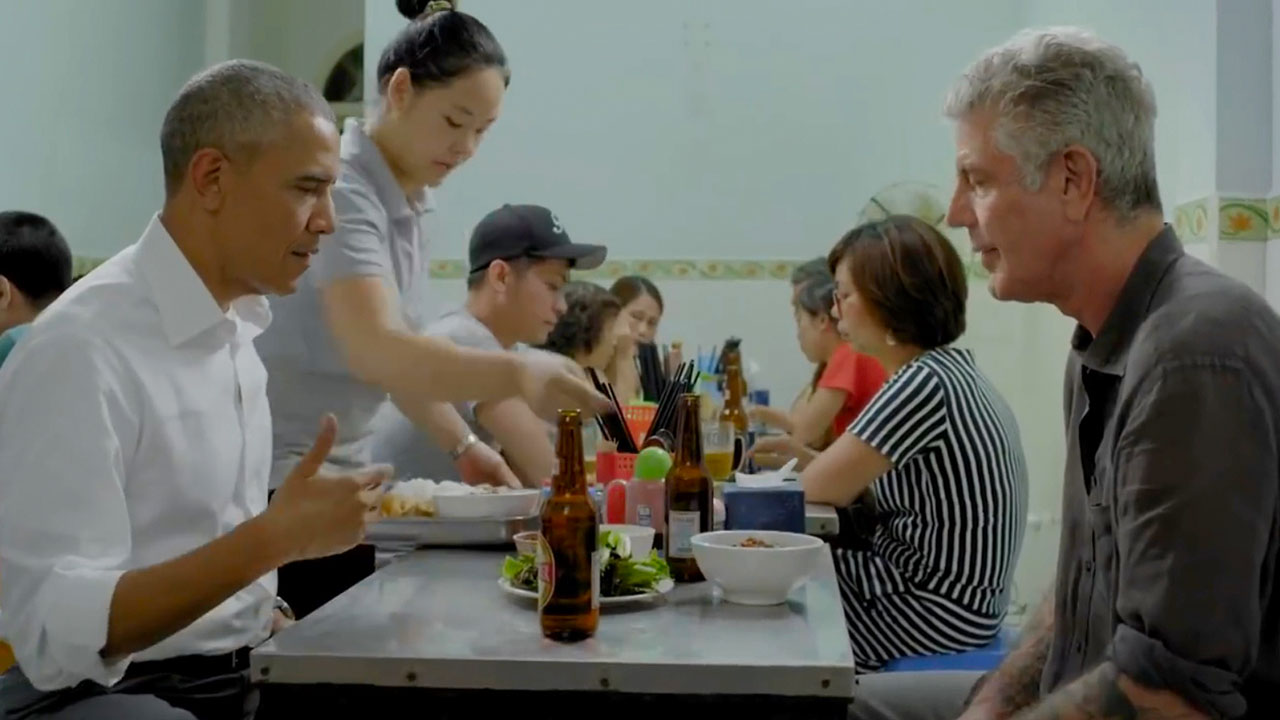
Diners from all over the world tuned in to watch a memorable episode of “Parts Unknown,” where the intimacy and authenticity of the experience resonated deeply with both Americans and Vietnamese. The restaurant, previously known mainly among locals, garnered attention, turning it into a pilgrimage site for food lovers eager to immerse themselves in the narrative that had unfolded there.
The visit gave rise to the iconic “Combo Obama,” which includes Bun Cha, crab spring rolls, and a local Hanoi beer, cleverly bridging cultural divides through the universal love of food. This homage to Obama’s choice is now a popular menu item, representing not just a meal but a shared moment of culinary appreciation that transcends borders.
Media Coverage of Obama’s Visit to Vietnam
The media coverage surrounding Obama’s visit was extensive and highly influential. News outlets from around the globe highlighted the significance of the meal, framing it as an exhibition of culinary diplomacy. Interviews and articles underscored how sharing food, particularly a traditional dish like Bun Cha, signifies a mutual respect for culture and culinary heritage.
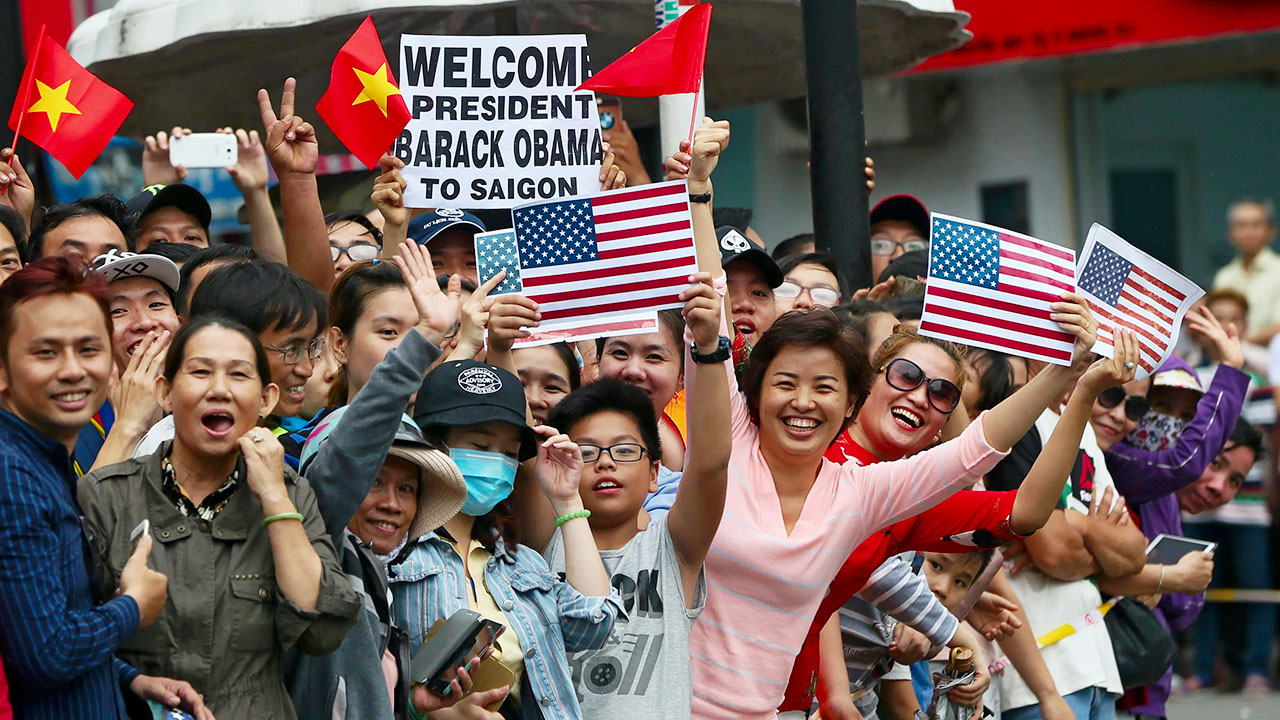
Print media, television segments, and digital platforms exploded with reflections on Obama’s dining choice, emphasizing the importance of authenticity in experiencing different cultures. The phrase “Bun Cha Obama” became ubiquitous, symbolizing the dish’s newfound fame and association with presidents and diplomacy.
The international interest sparked a surge in tourism to Vietnam, where visitors sought to recreate the experience that Obama had, leading to a renaissance in the popularity of traditional Vietnamese cuisine. The media coverage also led to the culinary education of many, as people began to explore not only Bun Cha but also other traditional Vietnamese dishes.
Cultural Impact of Obama’s Preference for Bun Cha
Following the highlight of Bun Cha on a global stage, the cultural impact has been profound. Internationally, Bun Cha is now recognized beyond Vietnam’s borders, often referred to simply as “Bun Cha” and admired for its culinary uniqueness. The dish serves as a testimony to how food can build bridges between cultures, fostering appreciation and understanding.
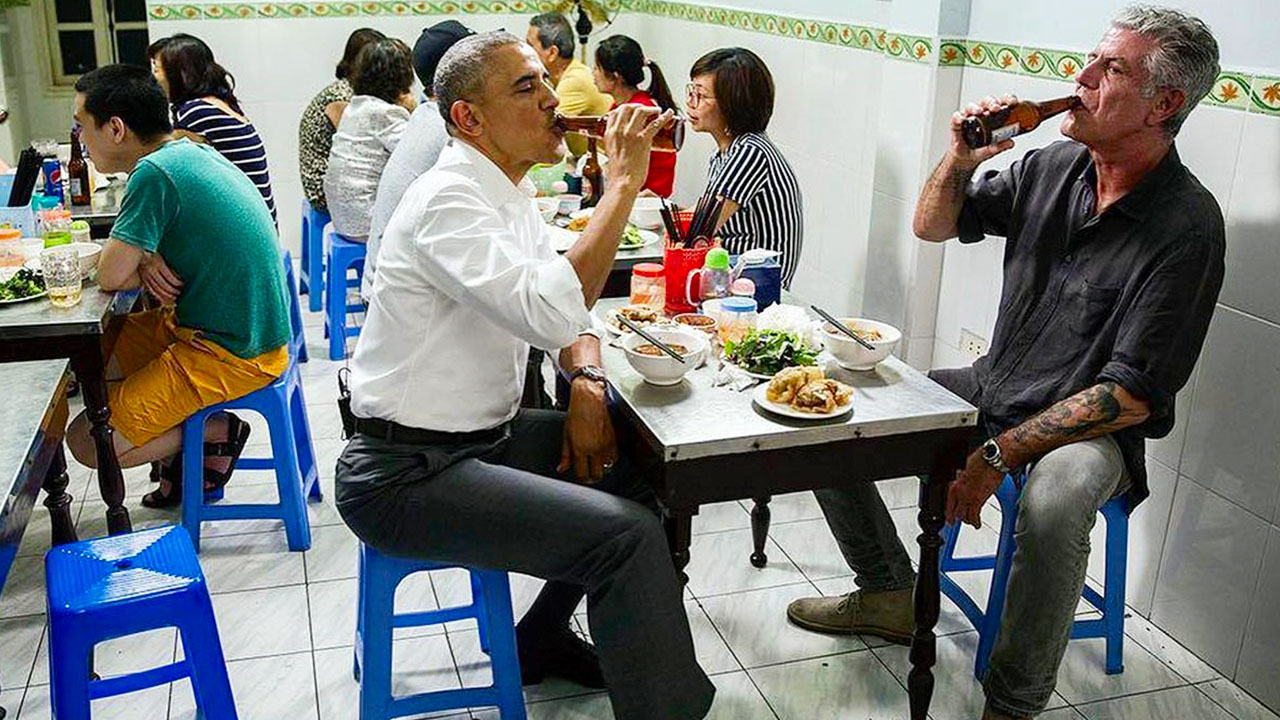
In Vietnam, the response was equally remarkable as locals took immense pride in their national dish achieving global recognition. The boost in tourism to Bun Cha Huong Lien supplements local income and highlights the hospitality of the Vietnamese community, inviting global audiences to experience their rich culinary traditions firsthand.
Moreover, the “Obama effect” revitalized interest in Vietnamese cuisine overall, leading to Vietnamese restaurants gaining traction in various places, not just in culinary hubs but also in small towns across America. The experience motivated chefs to explore traditional Vietnamese fare, integrating innovative takes on classic dishes, signaling a cultural shift towards embracing authenticity and diversity in American dining.
How to Make Authentic Bun Cha
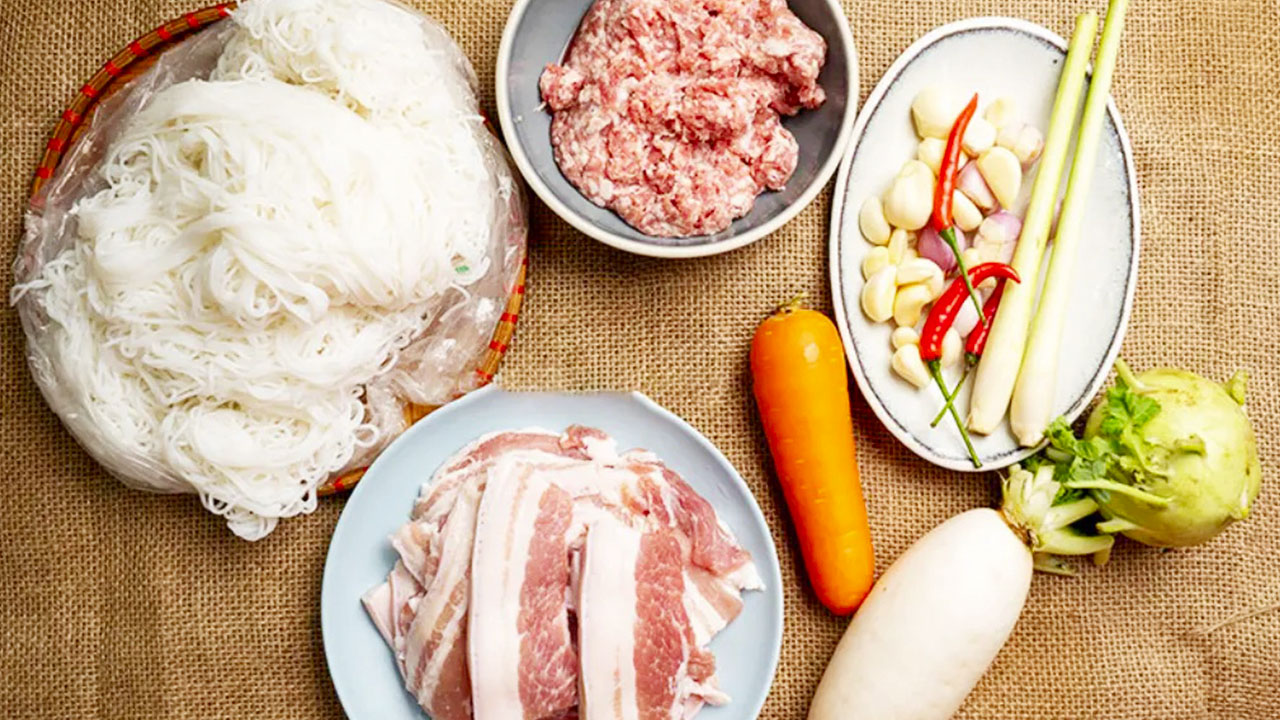
Creating authentic Bun Cha at home, while challenging, can be a rewarding culinary experience. Understanding the essential ingredients, appropriate preparation methods, and common pitfalls to avoid will help ensure a successful dish.
Essential Ingredients for Making Bun Cha
Pork:
- Ground Pork: Choose fatty ground pork for juiciness (ideally around 20% fat).
- Pork Belly: Use thin slices for its richness.
Marinade Ingredients:
- Fish Sauce: Essential for umami flavor.
- Brown Sugar: For a touch of sweetness.
- Garlic and Shallots: Minced, enhances the meat’s flavor.
- Ground Black Pepper and Oyster Sauce: For depth of flavor.
Rice Noodles:
- Bun (Rice Vermicelli): A staple in Vietnamese cuisine, it should be medium-sized.
Dipping Sauce:
- A mixture of water, sugar, fish sauce, lime juice, and minced garlic/chili for added flavor.
Fresh Vegetables:
- Fresh herbs like mint, Vietnamese basil; garden greens like lettuce or cucumber, and pickled papaya for that necessary crunch.
Step-by-Step Recipe for Bun Cha
- Marinate the Pork: In a bowl, mix ground pork and sliced pork belly with marinade ingredients listed above. Allow to marinate for 30 minutes to 2 hours.
- Prepare the Pickled Vegetables: Slice unripe papaya and pickle it in vinegar and sugar to add sourness to your dish.
- Make the Dipping Sauce: Combine the water with the other sauce ingredients, balancing the flavors to your preference.
- Cook the Pork: Grill the marinated pork on charcoal for authentic smoky flavors, until nicely charred and cooked through.
- Prepare the Noodles: Cook rice vermicelli according to package instructions; drain and set aside.
- Assemble the Dish: Serve grilled pork alongside dipping sauce, noodles, and fresh herbs. Customize each bite by adding noodles, vegetables, and pork to the dipping sauce.
Common Mistakes to Avoid in Cooking Bun Cha
- Choosing Lean Cuts: Avoid using lean pork, as it can lead to dry meat; fattiness adds flavor and moisture.
- Improper Marination: Don’t rush the marination; flavors need time to infuse.
- Overcooking the Meat: Monitor cooking time to retain moisture; don’t grill excessively.
- Skipping Fresh Herbs: Fresh herbs bring brightness; consider their necessity for flavor balance.
- Too Much Sauce: Serve dipping sauce on the side to avoid overpowering the dish.
Bun Cha in the United States
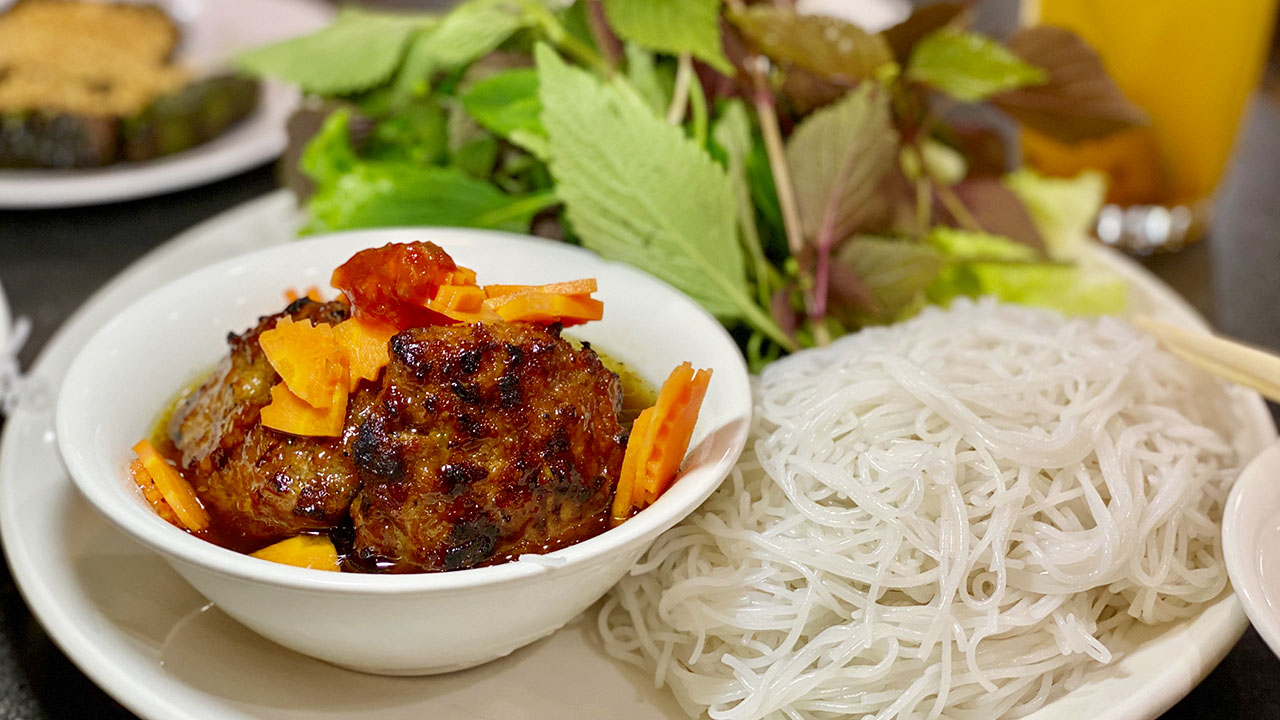
Bun Cha has transcended its Vietnamese roots, finding a significant place in the United States, particularly in areas with thriving Vietnamese communities. The dish offers a genuine taste of Southeast Asia that appeals to diverse palates.
Popular Bun Cha Restaurants in Major Cities
Houston, Texas:
- Pho Tan Loc: Renowned for its authentic Bun Cha, featuring tender grilled pork and fresh herbs, this place is beloved by locals.
Los Angeles, California:
- Cha Ca Thang Long: Offers a flavorful interpretation of Bun Cha while capturing the essence of traditional Vietnamese cooking.
New York City:
- Saigon Shack: Located in Greenwich Village, it serves a well-reviewed version of Bun Cha and is a popular destination for both locals and tourists.
San Francisco, California:
- Bun Cha Hanoi: Prioritizes quality ingredients, providing an authentic representation of Bun Chatraditional Vietnamese cuisine.
Variations of Bun Cha Found in the U.S.
In America, Bun Cha sometimes undergoes adaptations to cater to local tastes, appearing in various forms across restaurants.
- BBQ Variants: Some establishments offer BBQ-style versions by thumping in different marinades, adding a fusion twist to the traditional taste.
- Vegetarian Options: With the growing demand for vegetarian dishes, many restaurants now offer Bun Cha variations using grilled tofu, providing an alternative to meat.
- Fusion Dishes: Some menus may feature Bun Cha as part of a fusion dish, blending elements of different cuisines to create innovative adaptations that maintain the essence of the traditional dish.
How Bun Cha is Adapted for American Tastes
As Bun Cha garners popularity in the United States, chefs often adapt the recipe to suit American dining preferences. Leaner cuts of pork, such as pork tenderloin, are sometimes substituted instead of traditional fatty cuts like pork belly.
The cooking techniques may shift as well; while grilling is optimal, many chefs may broil the pork due to practicality in kitchens across the country. The presentation has also evolved, with some restaurants opting for neatly arranged meals reminiscent of bento boxes instead of serving the components in separate bowls, diverging from its traditional Vietnamese form.
The Health Benefits of Bun Cha
Bun Cha, with its grilled pork, rice vermicelli, and fresh herbs, presents various health benefits. This dish can fulfill dietary needs while delivering a rich flavor profile.
Nutritional Value of Bun Cha Ingredients
- High Protein Content: The primary ingredient, pork, is packed with protein essential for muscle repair and growth. Choosing lean pork options can further enhance its nutritional value.
- Balanced Meal: The combination of fresh herbs and vegetables enhances the dish’s nutritional range, offering vitamins and minerals important for immune health and overall well-being.
- Versatile Ingredients: The flexibility of ingredients means diners can customize their Bun Cha to include more vegetables or lean proteins, catering to dietary preferences.
- Low-Calorie Option: When prepared thoughtfully and served with an abundance of greens, Bun Cha can fit well within a low-calorie meal plan.
Bun Cha Versus Other Vietnamese Dishes
When comparing Bun Cha to other Vietnamese dishes, it’s essential to note its distinctive flavors. For instance, other dishes like Phở, although equally revered, present a vastly different culinary experience with their broths and noodles.
Whereas Phở is appreciated for its depth and complexity through long-simmered broth, Bun Cha shines with simplicity, emphasizing the grilling technique that transmits the deep, savory flavors of the pork. Such differences highlight the rich diversity within Vietnamese cuisine, reinforcing why Bun Cha occupies a unique niche.
Tips for Making Bun Cha Healthier
- Choosing Lean Cuts: Opt for leaner meats like pork tenderloin to achieve a healthier dish without sacrificing flavor.
- Adjusting Dipping Sauce: Lower the amount of sugar in the dipping sauce, and consider using lower-sodium fish sauce to enhance health benefits.
- Increasing Vegetable Portions: Enhance the nutrition and volume of the meal by including a variety of fresh herbs and vegetables, allowing for more fiber without significantly increasing calories.
- Using Brown Rice Noodles: Consider brown rice alternatives for added fiber and nutrition when preparing the dish.
Bun Cha: A Culinary Trend
The global rise in Bun Cha’s popularity reflects broader culinary trends, particularly within American and international landscapes. Spurred by social media and cultural exchanges, the dish has cemented its place in contemporary discourse surrounding Vietnamese cuisine.
Social Media Influence on Bun Cha Popularity
The explosion of social media has significantly contributed to the surge in Bun Cha’s international visibility. Photos, videos, and personal experiences shared online highlight the dish’s appeal, showcasing its vibrant colors and aromatic qualities. The viral moment of Obama dining on Bun Cha with Bourdain provided an authentic representation that many yearned to explore, leading to an influx of diners seeking out the dish.
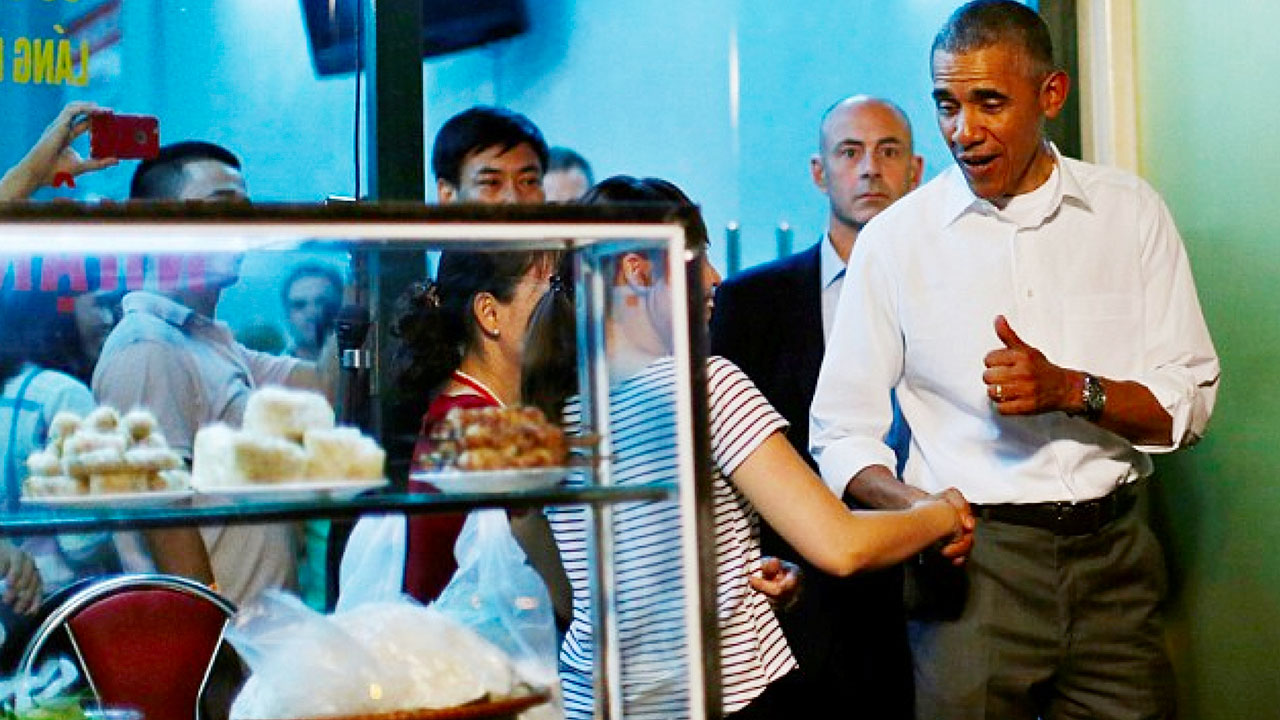
Platforms like Instagram and TikTok create a space for food enthusiasts to share their culinary experiences, allowing Bun Cha to achieve viral status and further enshrining it within popular culture. As food becomes a means of connection, Bun Cha stands out transforming from a local dish to a cultural exchange and a symbol of shared memories.
Bun Cha in Food Festivals and Events
Bun Cha has frequently appeared in food festivals and culinary events across the United States, further entrenching its status as a trendy dish. These events offer attendees the chance to experience Vietnamese cuisine authentically, often showcasing street foods like Bun Cha that resonate with vibrant cultural narratives.
Such festivals create an environment where diners can appreciate the dish’s flavors while learning about its history, preparation methods, and cultural significance. The opportunity for food lovers to try a well-prepared Bun Cha in lively settings underscores its acceptance and celebration, marking it as a staple in both Vietnamese and global culinary scenes.
Future of Bun Cha in American Cuisine
The future of Bun Cha within American cuisine looks promising as it navigates through a landscape increasingly receptive to diverse represented cuisines. As American palates adapt to international flavors, Bun Cha stands poised to capture the attention of food enthusiasts keen on experiencing Vietnamese fondness for flavor, balance, and authenticity.
Restaurant menus may continue to feature Bun Cha and explore creative renditions that respect traditional preparations while appealing to contemporary tastes. The curiosity surrounding Vietnamese cuisine also indicates a sustained interest, affirming Bun Cha’s relevance and ensuring that it will continue to be celebrated in homes and eateries alike.
In essence, Bun Cha has emerged as a testament to the evolving nature of our culinary world an embodiment of cultural pride, culinary exchange, and a celebration of palate experiences that connect humanity across divides.
In conclusion, Bun Cha is not merely a dish; it is a cultural narrative woven through history, community, and connection that resonates well beyond its origins. As it continues to grow in recognition and appreciation around the globe, Bun Cha serves as a reminder of how the simplest meals can create profound ties between people, cultures, and culinary traditions.


